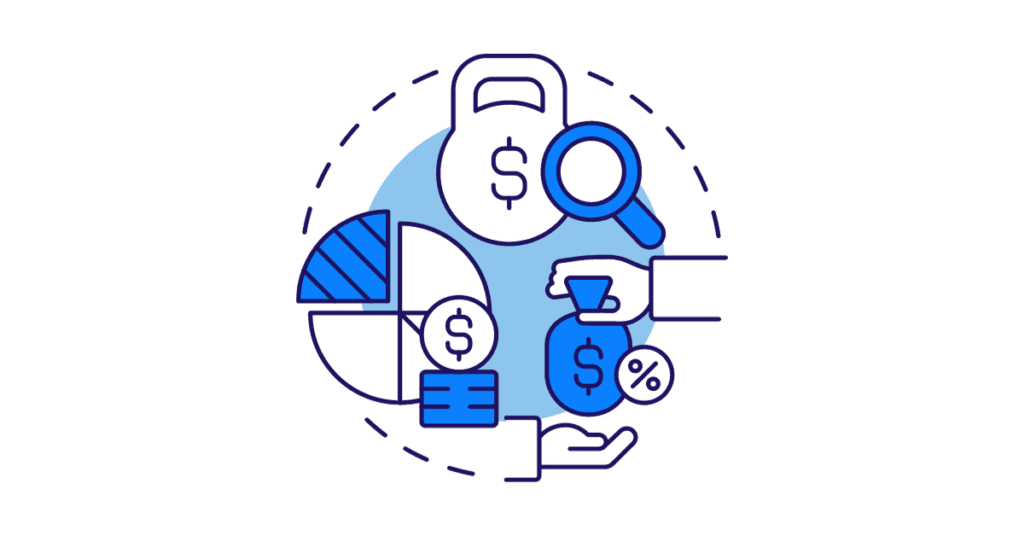Key Takeaways
Payment processing fees are higher for high-risk industries
Merchants working in sectors like gambling, cryptocurrency, adult entertainment and CBD typically face elevated processing charges—often 0.5–1 % more than low-risk counterparts—to offset increased fraud and chargeback risksRegulatory compliance adds significant cost
High‑risk businesses must invest in enhanced AML/KYC measures and adhere to evolving regulations, increasing both direct fees and indirect operational expensesSpecialised services carry their own fees
Services such as custom API integrations, fraud-prevention tools, recurrent payout systems and virtual IBANs introduce additional charges, though these can boost efficiencyBanking fees and rolling reserves impact cash flow
To guard against chargebacks, processors often impose rolling reserves and contract-linked penalties, temporarily holding a portion of revenue—tying up working capitalInsurance and chargeback fees add to cost stack
Insurances to cover fraud and legal action, plus individual chargeback fees (ranging from $20 to $100), increase per‑transaction costs in riskier sectorsInternational transactions incur surcharges
Cross-border payments attract foreign exchange, SWIFT, correspondent‑bank fees and conversion markups, each layering further cost on transactions.
The Cost of Running a High-Risk Business
The term “high-risk industries” often conjures up images of volatile stock markets or treacherous oil-drilling expeditions. However, in the world of finance, “high-risk” refers to sectors characterized by increased regulatory scrutiny, higher rates of chargebacks, or sectors that are more susceptible to economic downturns. These industries often face unique challenges when it comes to financial management, especially in terms of the fees involved in doing business.
While all companies deal with a myriad of costs, high-risk industries often have to contend with additional, specialized fees. This can make it difficult for businesses to estimate costs accurately, thereby complicating their financial planning efforts. In this blog post, we aim to demystify these fees to help businesses in high-risk industries make more informed decisions.

Types of Fees in High-Risk Industries
Payment Processing Fees
- High-Risk Merchant Account Fees: Businesses in high-risk industries usually pay higher fees for their merchant accounts. On credit card processing fees alone, high-risk merchants could face rates up to 2% higher.
- Chargeback Fees: These industries are often more susceptible to chargebacks, each of which carries a fee.
Regulatory Compliance Fees
- Licensing Fees: Depending on the industry, obtaining and maintaining a license can be costly.
- Audit Fees: High-risk industries often require more frequent and rigorous audits.

Specialized Services Fees
- Consultancy Fees: Expertise in legal matters, compliance, or sector-specific issues often comes at a premium.
- Security Costs: Enhanced security measures may necessitate specialized software or services.
Banking Fees
- Higher Wire Transfer Fees: Cross-border transactions may carry higher fees due to the risks involved.
- Account Maintenance Fees: Some banks charge higher fees for businesses operating in high-risk industries.
Insurance Costs
- Liability Insurance: Typically higher due to the elevated risk factors.
- Specialized Insurance: Some industries require types of insurance that others do not.

The Impact of Fees on Business Operations
Operating in a high-risk industry comes with its unique set of financial challenges, one of the most pressing being the range of specialized fees these businesses have to manage. Such fees not only dent the immediate cash flow but can also have cascading effects on the business’s long-term profitability, growth prospects, and strategic agility. This section aims to dissect how these fees impact multiple dimensions of business operations, providing a holistic understanding crucial for effective decision-making.
Cash Flow: The Lifeblood of Operations
In any industry, cash flow is the lifeblood that keeps the business operational. In high-risk sectors, this vital resource can be significantly constrained due to:
- Variable Revenue Streams: High-risk businesses often face fluctuating revenues, making cash flow management even more complex.
- Payment Delays: Lengthy verification processes associated with higher fees can delay incoming cash, affecting liquidity.
These disruptions can make it challenging to maintain day-to-day operations, causing bottlenecks that can cascade through the business.
Profit Margins: A Fragile Balance
Profit margins in high-risk industries are often razor-thin due to the combination of high operating costs and competitive pricing pressures. Specifically:
- Increased Operating Costs: Elevated fees directly increase the cost of doing business, putting downward pressure on profit margins.
- Consumer Sensitivity: High prices, possibly set to offset fees, could drive customers to competitors, thereby affecting profitability.
The resultant margin pressure requires businesses to constantly innovate and optimize, often while working with limited financial flexibility.
Strategic Planning: Navigating a Maze
Navigating the labyrinthine world of fees requires meticulous strategic planning. In high-risk industries, the complexities multiply:
- Dynamic Regulatory Environment: Fees can change rapidly due to legislative shifts, requiring businesses to be highly agile in their strategic planning.
- Resource Reallocation: Unforeseen fees may necessitate reallocating resources earmarked for other strategic initiatives, affecting long-term growth prospects.
Scalability: The Cost of Growth
Scaling a business is a significant milestone, but in high-risk industries, it comes with a unique set of financial barriers:
- Incremental Costs: Expanding into new markets or scaling operations often introduces new types of fees or increases existing ones.
- Risk Amplification: As the business grows, so does the scrutiny it’s under, potentially leading to increased auditing or compliance fees.
The decision to scale must, therefore, be carefully weighed against the financial implications of these additional fees.

Mitigating the Costs
For businesses in high-risk industries, fees are an inevitable part of the landscape. However, that doesn’t mean they are insurmountable. Through smart planning, leveraging technology, and strategic negotiations, these fees can be effectively managed or even reduced.
1. Shop Around
- Multiple Quotes: Always seek quotes from different service providers to have a broader understanding of the market rates.
- Industry-Specific Providers: Some service providers specialize in high-risk industries and may offer more competitive rates.
Taking the time to shop around not only gives you a better understanding of what’s available but can also be a valuable data point in negotiations.
2. Leverage Technology
- Automated Compliance Tools: Utilize fintech solutions that offer automated compliance checks to reduce legal fees.
- Blockchain for Transparent Transactions: For industries where transparency is critical, blockchain technology can minimize the need for expensive audits.
Utilize fintech solutions to streamline your payment processes. By embracing technology, businesses can reduce manual errors, expedite processes, and potentially decrease fees associated with delays or compliance issues.
3. Negotiate
- Volume Discounts: If your business processes a large number of transactions, use that as leverage to negotiate lower processing fees.
- Long-Term Contracts: Providers may be willing to reduce fees in exchange for a long-term commitment.
Don’t hesitate to negotiate fees with service providers. Remember, fees are often not set in stone. Armed with research and data, businesses stand a better chance of negotiating more favourable terms.
4. Bundle Services
- Comprehensive Packages: Some providers offer bundled services that cover multiple needs at a discounted rate.
- Custom Packages: Ask providers if they offer custom packages tailored to the unique needs of your high-risk business.
Some providers offer bundled services at a reduced cost, which can be a great way to save money in the long run. Bundling services can simplify administrative tasks and reduce costs. However, ensure that the bundled services provide the level of quality and specificity your business requires.
5. Diversify Financial Partners
- Multiple Banking Relationships: Having accounts with multiple banks can be a good strategy to mitigate the risk of sudden fee increases.
- Alternative Payment Methods: Diversifying payment methods can help negotiate better terms with each provider.
By not relying solely on one financial institution or service, you’re better positioned to weather unexpected changes in fees or service terms.

Mastering the Financial Challenges
The financial implications of operating in high-risk industries are complex, particularly when it comes to specialized fees. More than just a challenge, it’s an art that requires strategic planning, the use of advanced technology, and effective negotiation skills.
While these fees can be a significant hurdle, they don’t have to be a roadblock to your business’s success. By understanding the intricate fee structure and employing streamlined strategies like leveraging technology, negotiating terms, and bundling services, businesses can manage these fees in a way that mitigates costs and enhances profits. Navigating the complex terrain of specialized fees in high-risk sectors becomes more manageable with the right expertise.
That’s where Capitalixe comes in as your strategic ally. Specialising in fintech solutions tailored for medium to high-risk industries, we offer solutions to help you effectively manage and even reduce these costs. Gain access to a whole global network of leading financial institutions and specialized service providers to get better terms, leverage volume discounts, and even bundle services for more cost-effective solutions.
Book your free consultation with us to learn how!







